The ‘I’s and ‘we’s’ of letter-writing
Please reference as: Liz Stanley (2017) ‘The ‘I’s and ‘we’s’ of letter-writing’ Whites Writing Whiteness www.whiteswritingwhiteness.ed.ac.uk/curiosities/is-of-kuruman/ and also provide the paragraph number as appropriate when quoting.
1. The assumption is often made that a letter is written by one person, its author (unless there are multiple signatures). In a literal sense this is quite so. However, in a deeper sense many, perhaps even most, letters involve more than a single writer because they are part of exchanges, of correspondences of however short or long a kind. This is the concern of this cruiosity discussion.
2. Kuruman is on the edge of the Kalahari desert. Now in the Northern Cape, it is known for its scenic beauty and also for the ‘Eye of Kuruman’ (Die Oog, The Eye), a spring in its centre where so-far inexhaustible water, deep underground, surfaces at a stupendous rate each day. The Kuruman Mission was established by the London Missionary Society (LMS) in 1816 at Maruping near Kuruman, where a town of about 10,000 Batswana were living. Robert and Mary Moffat arrived there to take over running the station in 1820.
3. Robert Moffat (1795-1883) was a Scots farmer and gardener by background who 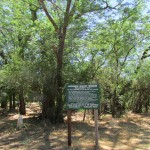 experienced the ‘call’ to serve as a missionary, while Mary Smith (1795-1871) was the daughter of a successful market gardener in Duckinfield, near Manchester in north west England. Soon after the Moffats arrived, Chief Mothibi gave permission for the Station to be relocated to its present position at Seodin in the valley of the Kuruman River. The Kuruman Mission became a key LMS mission station.
experienced the ‘call’ to serve as a missionary, while Mary Smith (1795-1871) was the daughter of a successful market gardener in Duckinfield, near Manchester in north west England. Soon after the Moffats arrived, Chief Mothibi gave permission for the Station to be relocated to its present position at Seodin in the valley of the Kuruman River. The Kuruman Mission became a key LMS mission station.
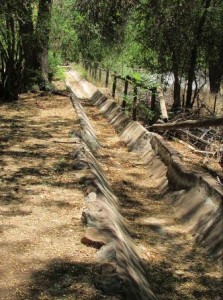 4. Baking hot and treeless when they arrived at the Seodin location in 1821, Robert Moffat oversaw and himself significantly built a water channel from the Kuruman Eye to the Station to source the Station and its food-growing and other activities.
4. Baking hot and treeless when they arrived at the Seodin location in 1821, Robert Moffat oversaw and himself significantly built a water channel from the Kuruman Eye to the Station to source the Station and its food-growing and other activities.
5. At the time in a strategic location in relation to the surrounding Bechuana peoples,  the Station became large and performed a range of functions, including running a large school and giving oversight to a number of smaller connected mission stations at places like Taung and Vryburg. Moffat himself saw the most important task as his translation of the bible, which required him to invent a Setswana orthography as the language had not been written before, with his translations later revised by
the Station became large and performed a range of functions, including running a large school and giving oversight to a number of smaller connected mission stations at places like Taung and Vryburg. Moffat himself saw the most important task as his translation of the bible, which required him to invent a Setswana orthography as the language had not been written before, with his translations later revised by  others at Kuruman and
others at Kuruman and its linked missions.
its linked missions.
6. Many images – photographs, portraits, sketches, engravings – exist of Robert Moffat, a good few of them glamorised and indeed heroicized. The photographs and portraits come from mainly the later years of Moffat’s fame.
7. There are f ar fewer images of Mary Moffat. Just one exists of her in relative youth, while there are more of her in older and old age. Interesting, curious, a reflection of what became his fame and lionising as those the mission was his alone.
ar fewer images of Mary Moffat. Just one exists of her in relative youth, while there are more of her in older and old age. Interesting, curious, a reflection of what became his fame and lionising as those the mission was his alone.
8. The Moffat house, the Homestead, is one of the buildings on the Kuruman Station which are still there and well cared for. The population of people ‘back then’ who lived on the Station and the area around it grew, so that it formed a hub.
9. Entering the Mission grounds now on a dirt road, which is passable only by those on foot, a 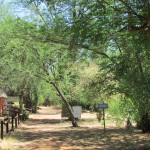 sign in the distance confidently announces that this is ‘missionary road to the interior’. The road sweeps past the Mission buildings and onwards. It was a road that increasing numbers of people travelled on, missionaries, but also traders, farmers and other trekkers.
sign in the distance confidently announces that this is ‘missionary road to the interior’. The road sweeps past the Mission buildings and onwards. It was a road that increasing numbers of people travelled on, missionaries, but also traders, farmers and other trekkers.
10. A sizeable population lived on or in the vicinity of the Mission Station; it acted as a hub for the region; it was a 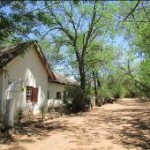 focal point for other mission stations and personnel; its dirt road was cleared, well marked and relatively easily travelled and travellers were a common sight. Letters flowed, initially delivered or collected via these people passing through who took the
focal point for other mission stations and personnel; its dirt road was cleared, well marked and relatively easily travelled and travellers were a common sight. Letters flowed, initially delivered or collected via these people passing through who took the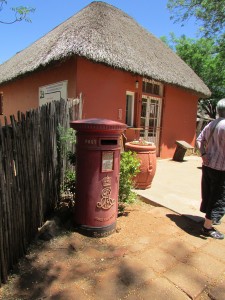 m to towns where postal services operated from, then later by a more formalised postal service.
m to towns where postal services operated from, then later by a more formalised postal service.
11. For the purposes of the Whites Writing Whiteness project and the letter collections it covers, some of the letter-writers involved are listed below:
Robert Moffat (1795-1883)
Mary Smith Moffat (1795-1871)
Mary Moffat (1821-1862), m. David Livingstone
Ann Moffat (1823-?), m. Jean Fredoux
Helen Moffat (1829-?), m. James Vasseur
John Smith Moffat (1835-1918), m. Jane Unwin
Jane Unwin Moffat (1831-1902) m. John Smith Moffat
Elizabeth (Bessie) Lees Moffat (1839-1919), m. Roger Price
Roger Price (1834-1900) m. Elizabeth Lees Moffat
Jean Gardiner Moffat (1840-1927)
12. These people are the writing ‘I’s of Kuruman – ‘Dear X, I have received your letter….’ They all have an association with Kuruman, to put it no stronger. However, for John Smith Moffat and Jane Unwin Moffat, and for Bessie Moffat Price and Roger Price, circumstances took them elsewhere, initially on that road to the interior, with both younger missionary couples initially living and working at slightly different although overlapping periods of time with the Matabele people in Molepolole.
13. They are also its ‘we’s’ as well, for there was a strong sense of connection and bonds between these people which was expressed among other things in the enormous quantities of letter-writing they produced.
14. For more information, see the ‘Missions, Missionaries and South Africa’ reading list.
Last updated: 23 December 2017






